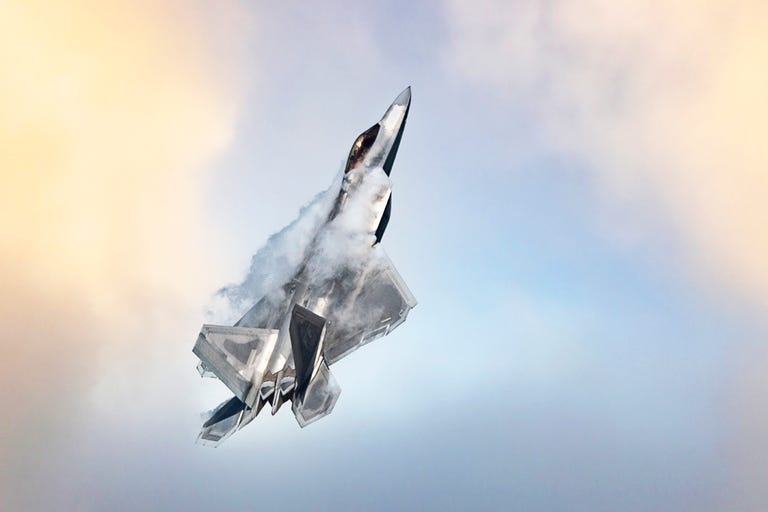
Should the Air Force retire the F-22 before its replacement arrives?
The U.S. Air Force and the arm of government that funds it are at loggerheads over the future of the F-22 Raptor. The Air Force wants to retire the jets to make room in the budget for its replacement, the Next Generation Air Dominance (NGAD) fighter. Congress, however, having financed aircraft that experienced significant production delays, is wary of retiring the world’s first fifth-generation fighter jet too soon.
The Air Force currently has 185 F-22 Raptors. One of the little known facts about the F-22, however, is that just 123 jets are in the primary mission aircraft inventory, meaning they are actually capable of combat. The remaining F-22 jets are training, development, and backup planes that are physically incapable of air combat.
Most F-22s are under 16 years old, but the plane’s development goes back to the Advanced Tactical Fighter program of the 1980s. This means that much of the design philosophy behind the jet is fixed to the Cold War era. The F-22 was meant to fly from well-established bases in Western Europe and duke it out against Soviet and Warsaw Pact fighters at medium ranges. It was designed to be the very best at what it does, but it was not designed for operating at very long ranges, for example.
Forty years later, the operating environment is much different. The U.S., once alone in fielding fifth-generation stealth fighters, now must compete against Russia’s Su-57 “Felon” and Chinese J-20 and FC-31 fighters. Air planners must now consider how to operate over the vastness of the Asia-Pacific theater, with fighter jets likely traveling a thousand miles or even more just to engage enemy fighters. The extent of the competition, coupled with the new geographic realities, requires a new aircraft.
The new NGAD plane will incorporate the latest in stealth technology but also, just as importantly, the ability to fly very long distances. Developed, built, and flown in just one year, in 2020, the aircraft still has yet to be revealed. It will be extremely expensive, however, with Air Force Secretary Frank Kendall warning earlier this year that each fighter will cost “multiple hundreds of millions of dollars.” (By comparison, the F-35A Joint Strike fighter costs about $70 million each.)
According to Air Force Times, the service wants to retire 33 of the oldest combat-capable planes, known as Block 20, as part of its 2023 defense budget request. Retiring them would not only save money on operating costs, it would also save the $50 million each it would cost to upgrade them to modern standards. The Air Force would then funnel the savings into NGAD development.
Although a prototype NGAD fighter has already flown, the aircraft is not scheduled to begin replacing the F-22 until 2030. The Air Force might divest most of its F-22s before the NGAD can be deployed in useful numbers, just when Russia’s and China’s fifth-generation fighter fleets will likely grow. (Russia’s cratering economy, a direct result of its invasion of Ukraine, might change that.) Congress is wary of allowing the Air Force to retire the F-22 early, especially after the F-35A was several years late and billions of dollars over budget. If NGAD runs into similar headwinds, Congress worries there could be a capability gap in which the Air Force lacks credible F-22 replacement.
The NGAD fighter, and any unmanned fighter jets that fly alongside it, will likely preserve American air superiority to 2050 and beyond. The concern is it could suck all the oxygen out of the room before it arrives, even if it arrives on time. The Air Force seems to believe the risk is manageable, but Congress isn’t so sure. Perhaps if NGAD went public, Congress would be better willing to justify funding the existing fleet of Raptors and buying a $200 to $300 million future fighter plane.





0 Comments